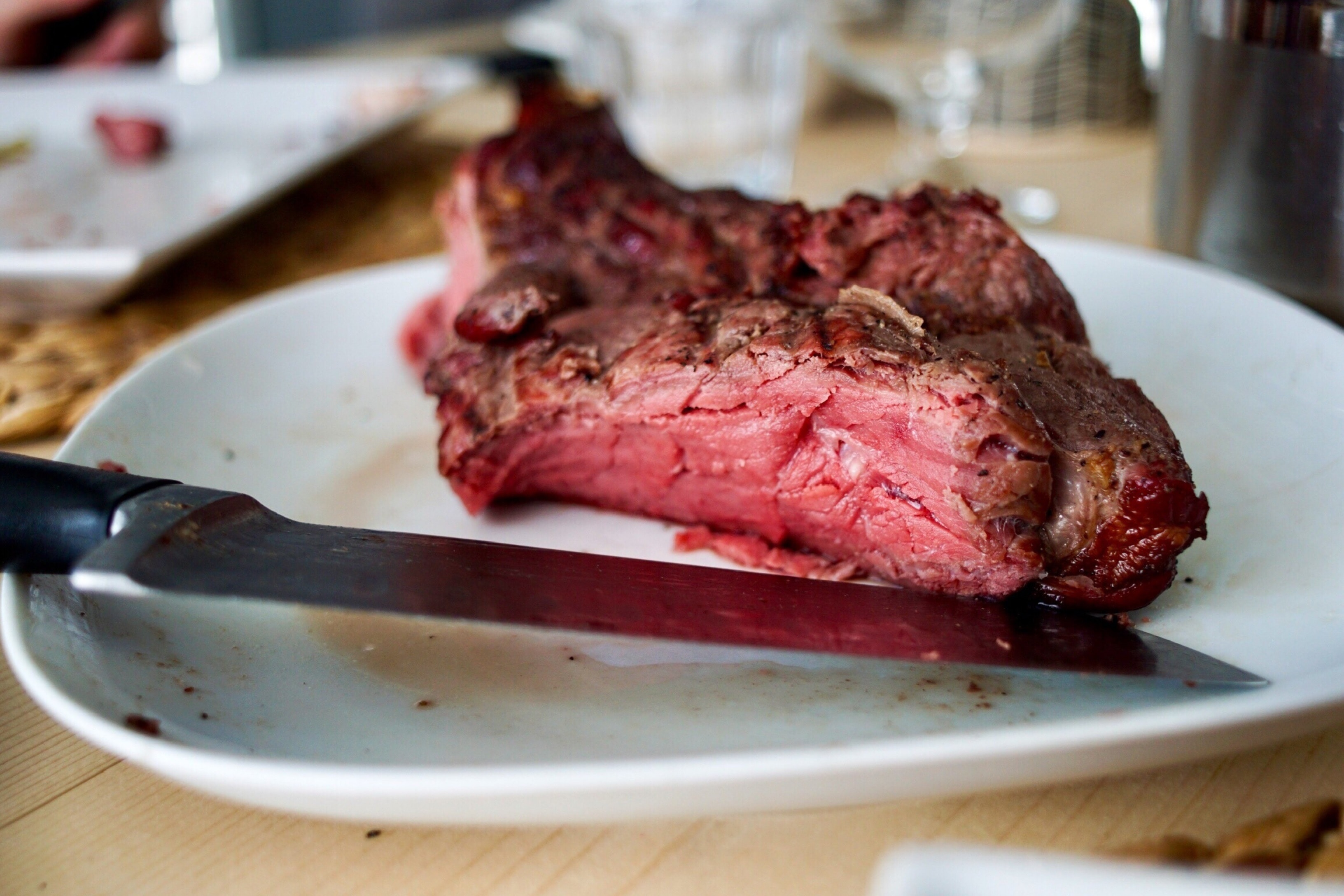How much red meat is healthy? For meat lovers, barbecue season means lots of hot dogs, hamburgers, charcuterie trays and exotic cuts like wild boar and bison. But there’s a dark side to the carnivore’s diet.
“Red meat consumption has been associated with an increased risk of heart disease as well as cancer and Type 2 diabetes,” says Jennifer Wong, MD, a cardiologist and medical director of Non-Invasive Cardiology at Memorial Care Heart and Vascular Institute at Orange Coast Medical Center in Fountain Valley, California.
In particular, there’s strong evidence that eating higher amounts of red meat like beef, pork and lamb as well as processed meats such as sausage, bacon and cold cuts could lead to a greater risk of colorectal cancer, according to the American Institute for Cancer Research (AICR).
Read on to learn about the downsides of eating red meat, how much you can consume per week, plus a few small changes you can make to up your grilling game and protect your health.
WHY IS RED MEAT BAD FOR YOU?
Red meat has high amounts of saturated fat, which raises your LDL or “bad” cholesterol levels and risk of heart disease. What’s more: The preservation process for smoked or cured meats leads to the formation of cancer-causing compounds, says Stacey Pence, RD, an outpatient dietitian at the Ohio State University Wexner Medical Center. On top of this, processed meats are also high in sodium, too much of which can trigger high blood pressure and a greater risk of heart disease as well.
It’s true red meat is rich in protein, iron and vitamin B12, which are key building blocks for muscles and red blood cells. However, there’s no monopoly on these nutrients, says Pence. They can also be found in other foods that don’t have the same links to negative health effects like chicken, fish, eggs and nuts.
The health risks that come with eating red meat don’t mean you have to give it up entirely. The key is to enjoy it in moderation.
HOW MUCH RED MEAT IS HEALTHY?
You should eat no more than three, 6-ounce portions for a total of 18 ounces of red meat each week, according to recommendations from the AICR.
“This amount strikes a balance between taking in the protein and nutrients that can be provided by red meat and limiting consumption of possible carcinogens,” says Julie Cunningham, RD, a certified diabetes educator. Additionally, it’s best to limit or avoid processed meats as much as possible, per the AICR.
7 SMALL CHANGES FOR A HEALTHIER RED MEAT HABIT
To dial down your risk of negative health effects from eating red meat, try making these simple tweaks.
1. CHOOSE LEAN CUTS
Step one: Lower your saturated fat intake by picking out lean cuts of red meat, says Cunningham. Keywords to look out for on the label include “loin,” “sirloin” and “round,” which are typically lower in fat compared to “prime” cuts.
2. TRIM THE FAT
As you prep your cuts for the grill, make sure to trim off any visible fat. Then, pour off melted fat when the meat’s done, says Dr. Wong.
3. BULK UP BURGERS
The ideal portion size for red meat is 3 ounces or about the size of a deck of cards, but this can make for a not-so-satisfying burger. The fix: Mix in veggies like black beans, mushrooms or even other meats such as turkey with your ground beef for a more filling and nutritious meal, suggests Cunningham.
4. DIVERSIFY YOUR PLATE
Instead of always making red meat the center of your plate, make a goal to expand your palate this summer. Love that umami taste? Try portobello mushroom burgers. Wary of trying alt-meats? Opt for a chicken or salmon burger once in a while. Grilled barbecue pizza and flatbread are all the rage, too.
5. MAKE SURF AND TURF
Some evidence suggests adding more “surf” to your turf could lower your risk of liver and colorectal cancer, notes the AICR. Fish like halibut, salmon and mahi mahi don’t just make great fish tacos — they’re also firmer and do well on the grill.
6. SAY NO TO CHAR AND SMOKE
When you cook meats at a high heat, they can produce chemicals called heterocyclic amines (HCAs) and polycyclic aromatic hydrocarbons (PAHs), which could trigger changes in DNA that, in turn, up cancer risk, according to the National Cancer Institute. While more research is needed on this potential link, it is known that well-done and smoked meats have higher levels of HCAs and PHAs. As such, avoid overcooking meat, minimize charring, and skip the smoker, says Cunningham.
7. CELEBRATE SUMMER PRODUCE
Pence recommends shifting your mindset from planning side dishes around meat to making the majority of your plate plant-based with plenty of vegetables, fruits, whole grains and beans. To do this, try recipes that bring out the flavor in your favorite produce like grilled sweet potato wedges, kebabs with meat and veggies, and even fruit and dessert.
THE BOTTOM LINE
“Red meat can contribute valuable nutrients to our diets,” says Cunningham, “but a high intake of red meat and processed meats is linked to colorectal cancer and other chronic conditions.” To lower your risk, aim to eat a maximum of three small servings of red meat per week and limit processed meats as much as you can by filling your plate with wholesome foods like fresh fruits and veggies.
Click here to read more about how much red meat is healthy.






